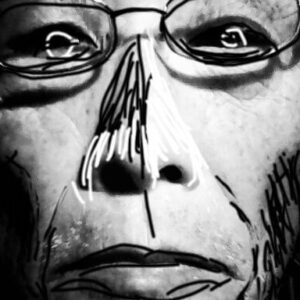Previous articles in this series:
Assaying Entropy II: Dying During Covid
Assaying Entropy III: Thinking about Covid
Assaying Entropy IV: Covid and America
The word “assay” was a doublet of “essay” and both came from the French “essayer” which meant to try or to test or, originally from Latin, to weigh. For the last few hundred years the two words separated until more recently “assay” narrowed to just the laboratory usage. But in New Mexico, the assaying of gold and silver still carried with it the old sense of measuring weight and is closely associated with the image of scales (not digital scales but good, old balances). I use the term in this local sense of finding what is valuable in a pile of plain stuff, sorting it out, and weighing it. And, I imagine the weighing process as looking for equilibrium in the midst of constant movement of thought, an intellectual balancing act.
Entropy, I said in the first essay, was accumulating in the universe and was the irrecoverably lost energy of any work or expenditure of energy. I did not say, but should have, that in discussions of entropy one finds the term “arrow of entropy” used synonymously for the arrow of time. Like time, entropy is one directional. So, I am writing about loss in time.
I did say, but did not emphasize enough, that my idea of entropy as a measure of randomness comes from statistical mechanics. Normal Newtonian mechanics deals with the action of force upon a material object. You push something and it moves. Newton’s laws tell you how it moves. But when you look at the motion of invisible things, like atoms of a gas, it’s pretty hard to see how to push on a single atom and measure how that atom moves. Statistical mechanics uses statistics to describe how those atoms, collectively, not individually, move. I came back to statistics in my third essay, but those thoughts originated in my consideration of entropy.
Now, in assaying entropy in our culture today, I could have started any place, but I started (because it has been on my mind) with a look at our attitudes towards death (loss) and in particular our collective carelessness about the pandemic, and I asserted without evidence or argument that the reason our attitude seems to me to have shifted was because of an exaggerated or maybe misunderstood idea of individual rights. That assertion is a postulate, just the setting of a problem which then has to be solved, and everything that followed that establishment of theme (that is, parts III and IV) focused on various solutions to the problem of whether individualism related to this seeming shift in public awareness and of how that works.
I began that investigation by looking at the limits of our ability to think. I then suggested that those limitations are not necessarily universal but have cultural aspects; that is, I suggest maybe different cultures have different distributions of the limitations. I then turn to wondering what aspects of American culture can tell us about our limitations.
In this process, I repeatedly distinguished between a collective, statistical, communal point of view (in which all people were considered equal, identical, free parts of the whole) and an individualistic, causal, and self-asserting point of view (in which each individual was considered to possess individual rights, uniquely different from all others, and free of the whole).
This path of thinking led to a contradiction: that a society which considers itself a democracy (which I think of as a collective idea) is also, considering the failures during the pandemic – measured very simply-mindedly by the Covid deaths – the most assertive of individual rights and opinions.
So, I ask at the end of essay IV whether we are a democracy and what that can mean.
The next sections will address that question.
As you can see, assaying is an investigation, an ongoing and developing story. It’s a path. Therefore, I do not follow the old correct-writing adage that my teachers tried to drum into me as a kid, that you say first what you want to say and then fill in the blanks. Even then, I wondered how you could ever write a mystery story if you began with the murderer. I write a process of thinking and not a series of bullet points. But since I do have a theme, I will repeatedly circle back to that theme. Right now, I am writing about American democracy, but keep in mind that this is a path that should, hopefully, lead back to our carelessness about Covid deaths.
Corollary with investigation, this kind of writing does not have a game plan, and it often moves through serendipity. What I can do is provide a summary pause as I go along.
